Circulatory System
The circulatory system, also known as the cardiovascular system, is responsible for transporting blood, nutrients, oxygen, and hormones to cells throughout the body, and removing waste products such as carbon dioxide and metabolic by-products.
Components of the Circulatory System
The circulatory system consists of the heart, blood vessels, and blood.
Heart
The heart is a muscular organ that pumps blood throughout the body. It consists of four chambers - two atria and two ventricles. The right side of the heart pumps oxygen-poor blood to the lungs, while the left side pumps oxygen-rich blood to the rest of the body.
Blood Vessels
There are three types of blood vessels: arteries, veins, and capillaries. Arteries carry blood away from the heart, veins carry blood back to the heart, and capillaries are tiny blood vessels where oxygen and nutrients are exchanged for waste products.
Blood
Blood is a fluid that carries oxygen, nutrients, hormones, and waste products throughout the body. It consists of red blood cells, white blood cells, platelets, and plasma.
Functions of the Circulatory System
The circulatory system has several important functions:
- Transportation of oxygen, nutrients, and hormones to cells
- Removal of waste products such as carbon dioxide
- Regulation of body temperature and pH
- Protection against diseases and infections
Study Guide
To study the circulatory system, focus on the following key points:
- Identify the parts and functions of the heart, including the chambers and the flow of blood through the heart.
- Understand the structure and function of arteries, veins, and capillaries.
- Learn about the composition of blood and the roles of red blood cells, white blood cells, and platelets.
- Describe the functions of the circulatory system and how it supports overall health and well-being.
◂Science Worksheets and Study Guides First Grade. Weather

 Activity Lesson
Activity Lesson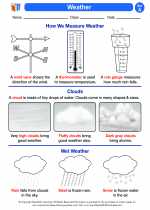
 Worksheet/Answer key
Worksheet/Answer key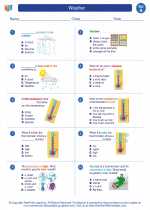
 Worksheet/Answer key
Worksheet/Answer key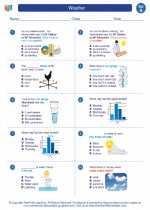
 Worksheet/Answer key
Worksheet/Answer key
 Worksheet/Answer key
Worksheet/Answer key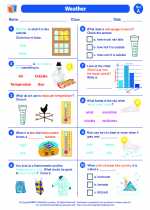
 Vocabulary/Answer key
Vocabulary/Answer key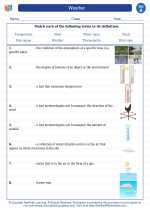
 Vocabulary/Answer key
Vocabulary/Answer key
